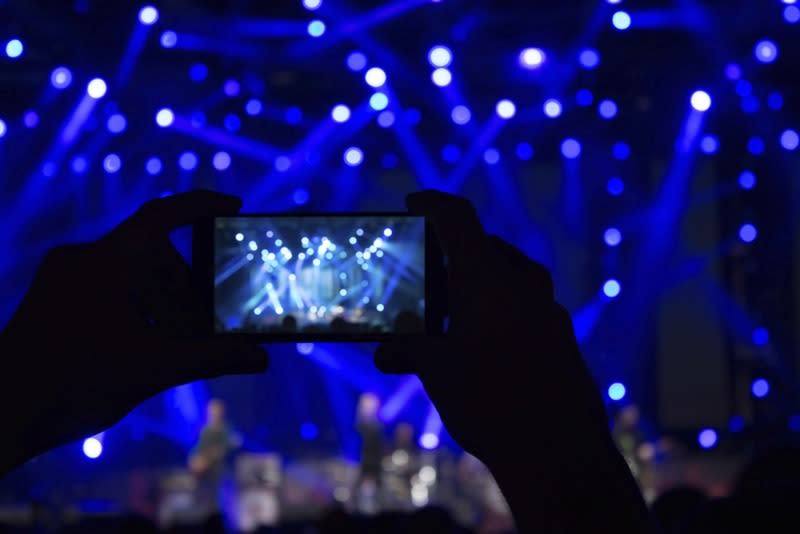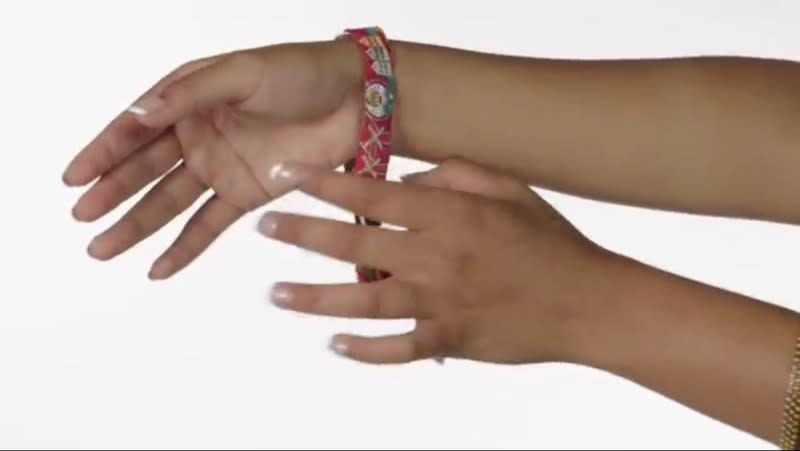Wave Your Phone in the Air: How Technology Is Changing Live Music

(Photo: Thinkstock)
The lights go down. Your pulse races in anticipation of that first power chord or drumbeat. Bodies surge toward the stage. But just then, you notice something: Almost everyone in the audience is holding his or her cell phone overhead.
For decades now, technology — from vinyl LPs and FM radio to MP3s and online streaming — has been changing the way we listen to recorded music. But more recently, tech has also been changing every aspect of the concert-going experience, from getting in the door to sharing the show with friends.
This increased tech presence at shows is happening at the same time that live music is booming (and, coincidentally, recorded music sales are plummeting). Midway through 2015, the Top 100 tours pulled in a combined gross of $1.43 billion, up $402 million — or 39 percent — over the midpoint of 2014, according to Pollstar. All that money has not gone unnoticed by the tech sector.
The new applause
Those upraised cell phones are certainly the most visible part of the trend. While websites — including Yahoo — continue to present official concert streams, live-streaming apps such as Periscope and Meerkat allow fans to DIY concert-stream and share bootleg broadcasts.
Some artists, including Katy Perry, have embraced the new technology. Perry calls smartphone use at concerts “the new applause.” Other artists, ranging from Adele to the Black Eyed Peas, have asked audiences to “put their cell phones in the air” as the 21st-century equivalent of hoisting a lighter back in the ’70s. (And, yes, there’s a Zippo Lighter app that’ll let you recreate that).
Meanwhile, Perry’s frenemy Taylor Swift has representatives working overtime to shut down the unauthorized streams. Other artists, including the Eagles (and band leader Don Henley on his recent solo tour), the Yeah Yeah Yeahs, and Bjork, have strict “no cell phone” policies at their concerts. The hope is that fans will enjoy the show in the moment, with their own eyes rather than through the screens of their phones, and also that they won’t record and photograph the performance for posting online.

Taylor Swift, her wishes being ignored. (Photo: Yahoo)
This, of course, presents a dilemma for concert promoters and app developers alike: How can they push audiences to use such apps when some artists urge audiences not to use their phones during performances?
“That was a fundamental, philosophical discussion we were always having,” says Ethan Kaplan, who spent three years heading up product, technology and engineering at Live Nation Labs. “How do we deal with not taking people out of that experience while still making the experience better? How do we negotiate and tread that path lightly?”
Kaplan, now chief digital products officer for Fender Musical Instruments, compares concertgoers to customers of the hospitality industry. “You’re locked into a place. You pay ahead of time. You’re supposed to get a great experience. And sometimes you do and sometimes you don’t,” he says. “But at the same time, there’s these people who want you to be paying attention to them and if you aren’t, they get pissed off.”
While at Live Nation, Kaplan’s team developed the first two versions of the At the Concert app; its current iteration promises to put “your ticket, wallet, food, and drink all in the palm of your hand.” It gives concertgoers early access to tickets, ticketless entry, concert tips, and now (at select venues) in-seat delivery of food and drinks.

Don’t miss a thing with seat-side service (Screenshot: Live Nation’s At the Concert app)
Chad Issaq, executive VP of business development and partnerships for festival producer Superfly, says it’s a generational thing. He personally doesn’t use his smartphone at concerts. “I’m 40 and when I go to shows, I never hold up my phone and take a video or a picture,” he says. “It’s not my generation.” (For the record: His first show was a double-bill with Steve Miller and the Doobie Brothers.)
He thinks the rule of artists minimizing smartphone use at concerts is smart — but, he admits, “that could be my grumpy nature talking.”
Festival fixtures
It’s a different story at festivals, Issaq says. There, a ban would not only be impossible to enforce: It “would be a detriment.”
Smartphones have become essential tools at festivals, with apps that feature maps, schedules, friend-finders, and updates helping attendees navigate multiple stages, entertainment and food options, and shifting schedules.

Dude, where’s the stage? (Screenshot: Outside Lands app)
Yet many festivals — including Bonnaroo, Outside Lands, Coachella, and dozens of others — have already moved beyond smartphones. Instead, they employ RFID wristbands, equipped with a radio frequency identification chip.
“At these festivals, we have charging stations, but phones die, people lose their phones,” Issaq says. “So you want to create an environment where everyone has a ticket or a payment source.”
Earlier this year, Superfly gave attendees the option to link their wristbands with a credit card so they could buy beer and wine with the swipe of their bracelets at Outside Lands. There are also marketing opportunities during the wristband-registration process. In 2014, Superfly did a deal with Spotify giving concertgoers a free trial. This year, it was with the just-launched HBO Now streaming service.
(Speaking of deals, less than a month ago, streaming service Pandora announced that it had acquired Ticketfly in a $450 million deal in cash and stock. The hope seems to be that fans using the streaming service will also purchase concert tickets through the app.)

The latest word in concert tech. (Photo: Outside Lands)
Outside Lands and other festivals also give attendees the opportunity to link their RFID bracelets to social media accounts, with check-in points throughout the festival grounds. “We direct people, via the map, which is part of the app, to different locations where fans can scan their wristbands,” Issaq explains. “So let’s say you scan your wristband near the main stage where Radiohead is playing. By doing so, you’re going to get an image from that performance sent to your Facebook page.”
“It’s all about being creative,” Issaq adds. “If you’re not creative in figuring out how technology can serve the audience, that’s when it starts to become a distraction.”
Follow Craig Rosen on Twitter.
Yahoo is live-streaming the Voodoo Music + Arts Experience, a three-day music festival from New Orleans, starting on Friday, Oct. 30, at 4 p.m. ET.

